Sweet Plantain Lasagna, also known as Pastelón, is a comforting casserole dish that combines the best of both worlds: the sweetness of ripe plantains and the rich flavors of a well-seasoned Puerto Rican picadillo. The result is a harmonious blend of sweet and savory that will transport you straight to the sunny shores of the Caribbean.
Layers of plantains, picadillo, and cheese, make this Sweet Plantain Lasagna or Pastelon a crowd-pleaser and staple in many Puerto Rican households. Delight in this recipe while accompanying your Pastelón with Stewed Red Beans or delicious Frijoles Negros (black beans) and White Rice.
This recipe is great for holidays and family gatherings since it can easily serve more than four people. Pernil, Arroz con Gandules, and Guineos en Escabeche are other traditional recipes used during holidays and special celebrations on the island in which this recipe is also served.
Jump To
Why this recipe is da Bomb!!!
- Easy to Make: Although we use the term Plantain Lasagna, This recipe could also be made into a single layer, just like a Plantain Shepherd's Pie.
- Flavorful Layers: The sweet plantains, savory meat filling, and melted cheese create an excellent combination that tantalizes the taste buds.
- Comforting and Satisfying: Hearty and satisfying dish. It's the kind of comfort food that can bring a sense of warmth and contentment when enjoyed with family and friends.
- Cultural Significance: Pastelón, or Piñon as it is also known in the island, is culturally significant and deeply rooted in Puerto Rican cuisine. It represents a culinary tradition passed down through generations, making it a great way to celebrate and appreciate the cultural heritage of Puerto Rico.
Are Pastelón and Piñon the same?
The answer is yes and no. Both dishes are made with plantain and ground beef. However, one has mashed plantains, and the other has sliced and fried plantains. My mother will always made pastelón with sliced plantains. Some sources, like Puerto Rican Cookery, by Carmen Abouy Valldejuli, call the casserole made up of layers of fried sweet plantain Piñon, and pastelón is the casserole with mashed plantains.
However, I believe we have grown to interchange the names for either dish, as you can see in many Google searches for the word Pastelón. Throughout the internet you will find different posts with either name or technique.
Ingredient Notes
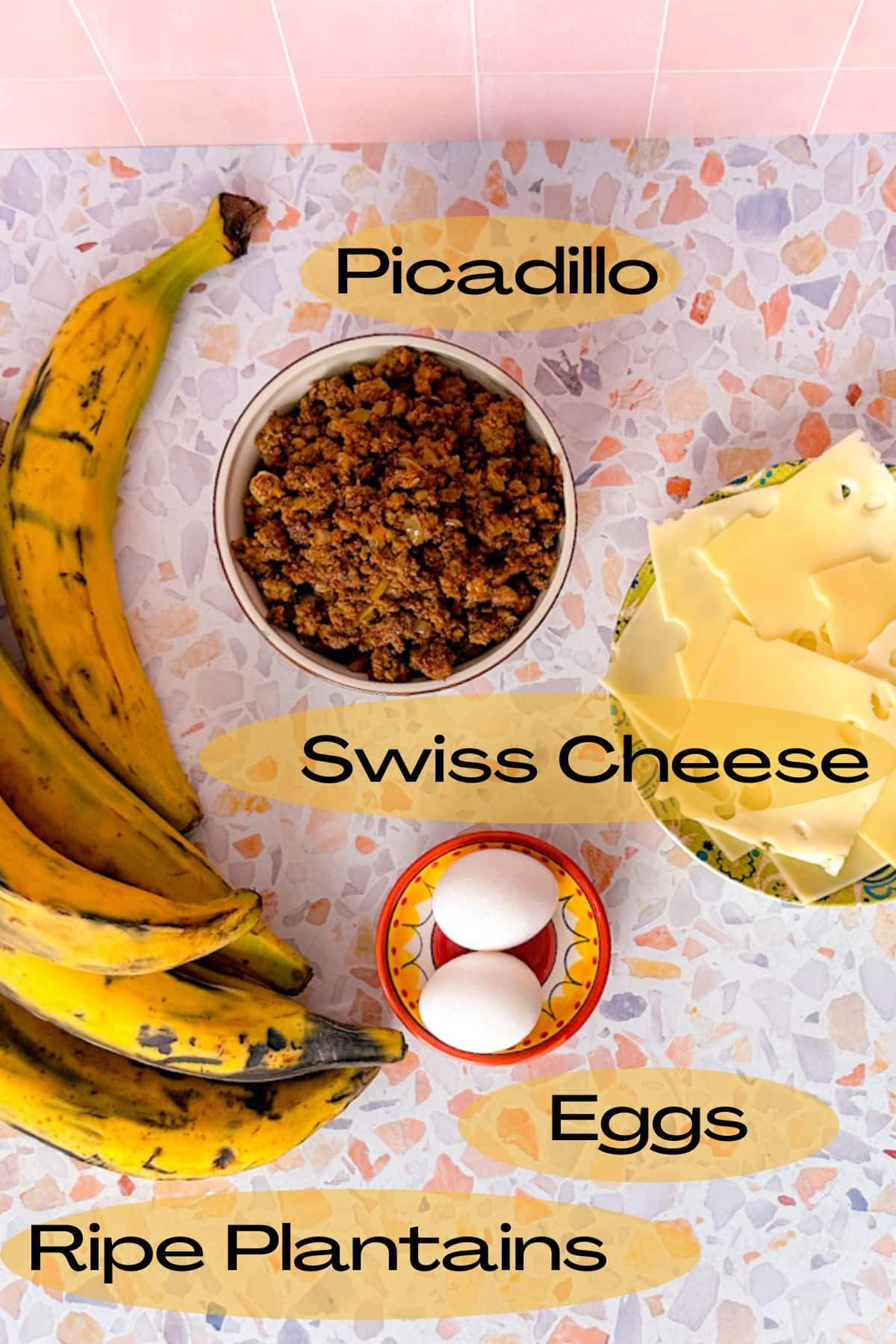
- Plantains: Ripe plantains are a delicious and versatile fruit commonly found in tropical regions. They are closely related to bananas but have a different taste and texture. When ripe, plantains have a sweet flavor and a soft, creamy texture. Their skin turns yellow with black spots, indicating their ripeness.
- Ground Beef: Picadillo is the traditional filling for this decadent dish, but do not let this stop you from using other fillings
- Swiss Cheese: Swiss cheese has a distinctive flavor profile, described as nutty, slightly sweet, and mildly tangy. The texture of Swiss cheese is smooth and slightly elastic, and it melts well, making it a popular choice for melting in sandwiches, fondues, and other warm dishes.
See my recipe card below for a complete list of the ingredients with measurements.
Variations and Substitutions
- Other Vegetables: For a low-carb or keto version of this delicious dish, try substituting plantains with Eggplant, Zucchini, or Squashes.
- Fillings: Ground pork, chorizo, chicken/ turkey, or fowl would be great substitutions. Besides meat, you may add string beans, a mixture of carrots, corn, and peas (the traditional vegetables for Shepherd’s Pie).
- If you are looking for a vegetarian/vegan alternative, visit Tasting Table for ways of substituting the meat with lentils, tofu, or impossible meat.
- Other non-traditional fillings could be Ropa Vieja, Shrimp and Scallop Stew, and/or a combination of Pernil and Arroz con Gandules.
- Cheeses: Any cheese with elasticity and that melts well; Mozzarella, Provolone, Munster, or Gouda cheeses would be great substitutions. There are also plenty of Vegan/Vegetarian options that would work great in this recipe.
Step-by-step instructions for pastelon (sweet plantain lasagna)
Preheat the oven to 350℉ degrees. Use 5 to 6 plantains for an 18-inch skillet or 3 to 4 for a smaller pan. Precook Puerto Rican Picadillo and pre-fry plantains before assembly.
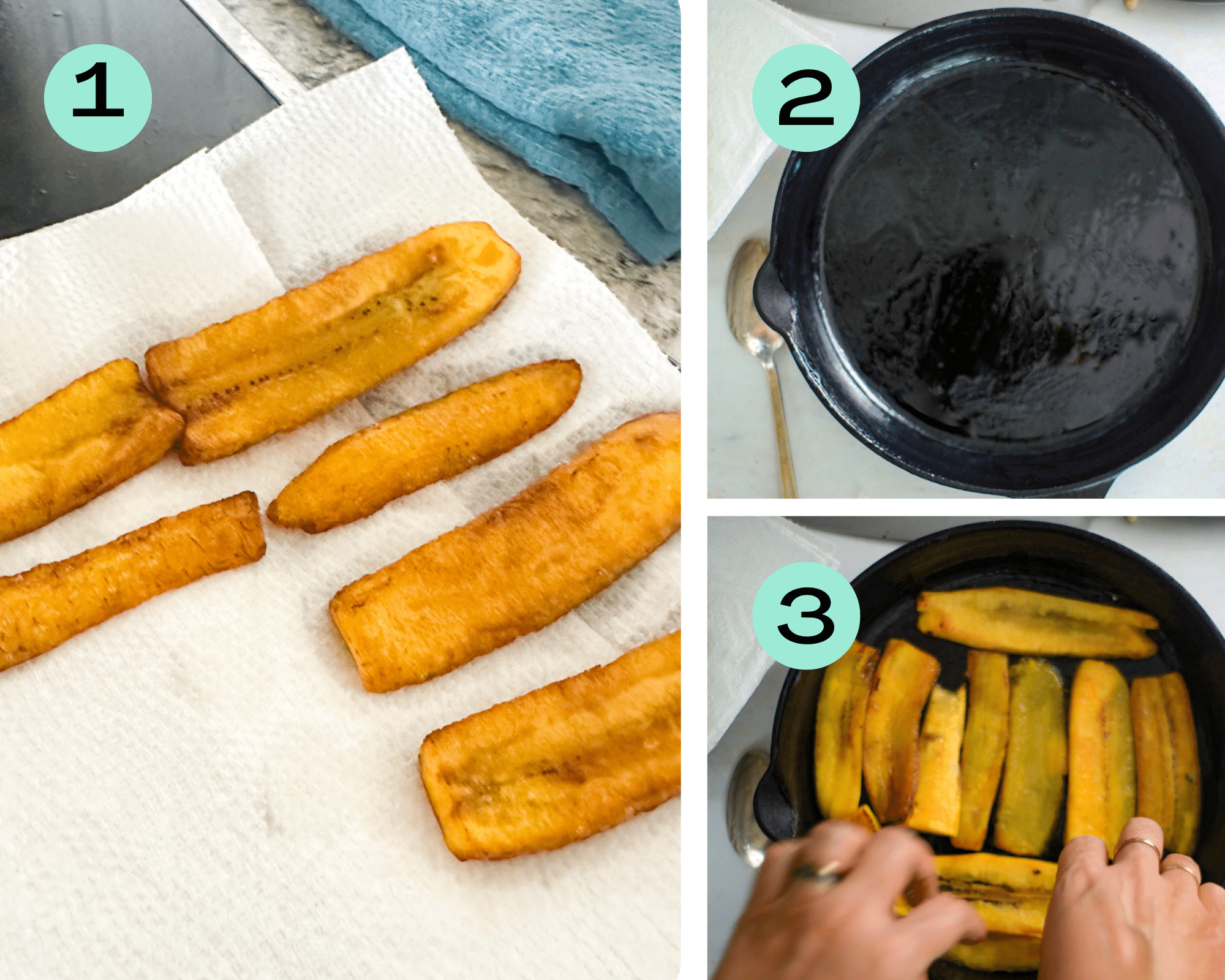
- Step 1. Slice plantain into long strips. Pan-fry them until golden. Set aside and allow them to drain excess oil and cool.
- Step 2. Grease a cast iron skillet or baking dish. Use butter, oil, or bacon fat.
- Step 3. Start lining the bottom of the pan with pre-cooked plantains. Cover the bottom and sides of the pan with plantains.
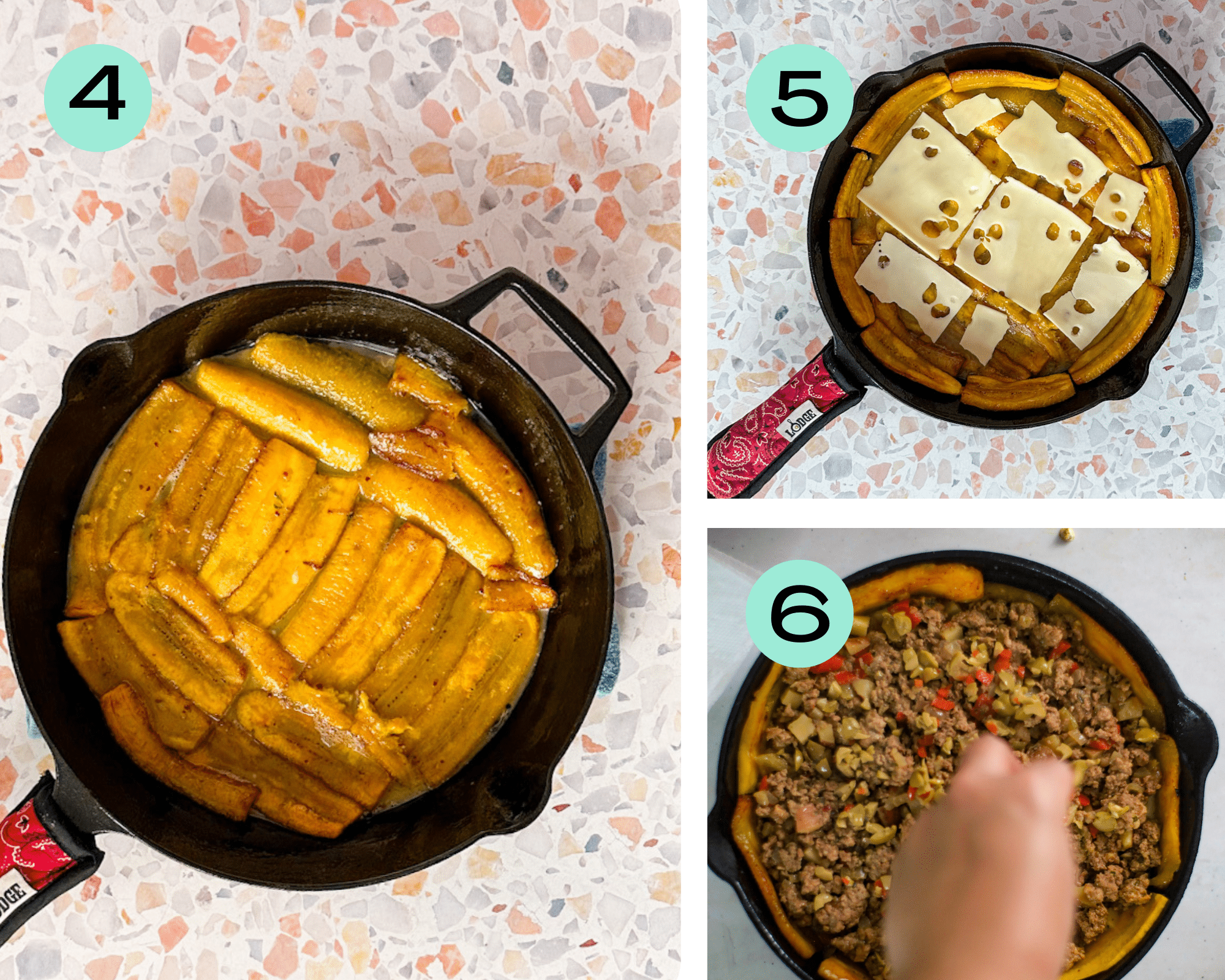
- Step 4. Whip an egg, lightly season it, and pour it over the plantains. Create a thin cover with the egg batter. This assures there will be no holes at the bottom of the pastelon.
- Step 5. Add a layer of cheese to the bottom of the pastelón; again, as it melts, it will bind the dish together.
- Step 6. Fill pastelon with picadillo.

- Step 7. Top picadillo with favorite cheese.
- Step 8. Add another layer of fried plantains to close the pastelón. If you have any remaining plantains, cut them into small pieces to fill any open crevices.
- Step 9. Drizzle or brush pastelón with another lightly seasoned whipped egg. Bake in the oven for 20 minutes or until the internal temperature is 165 degrees.
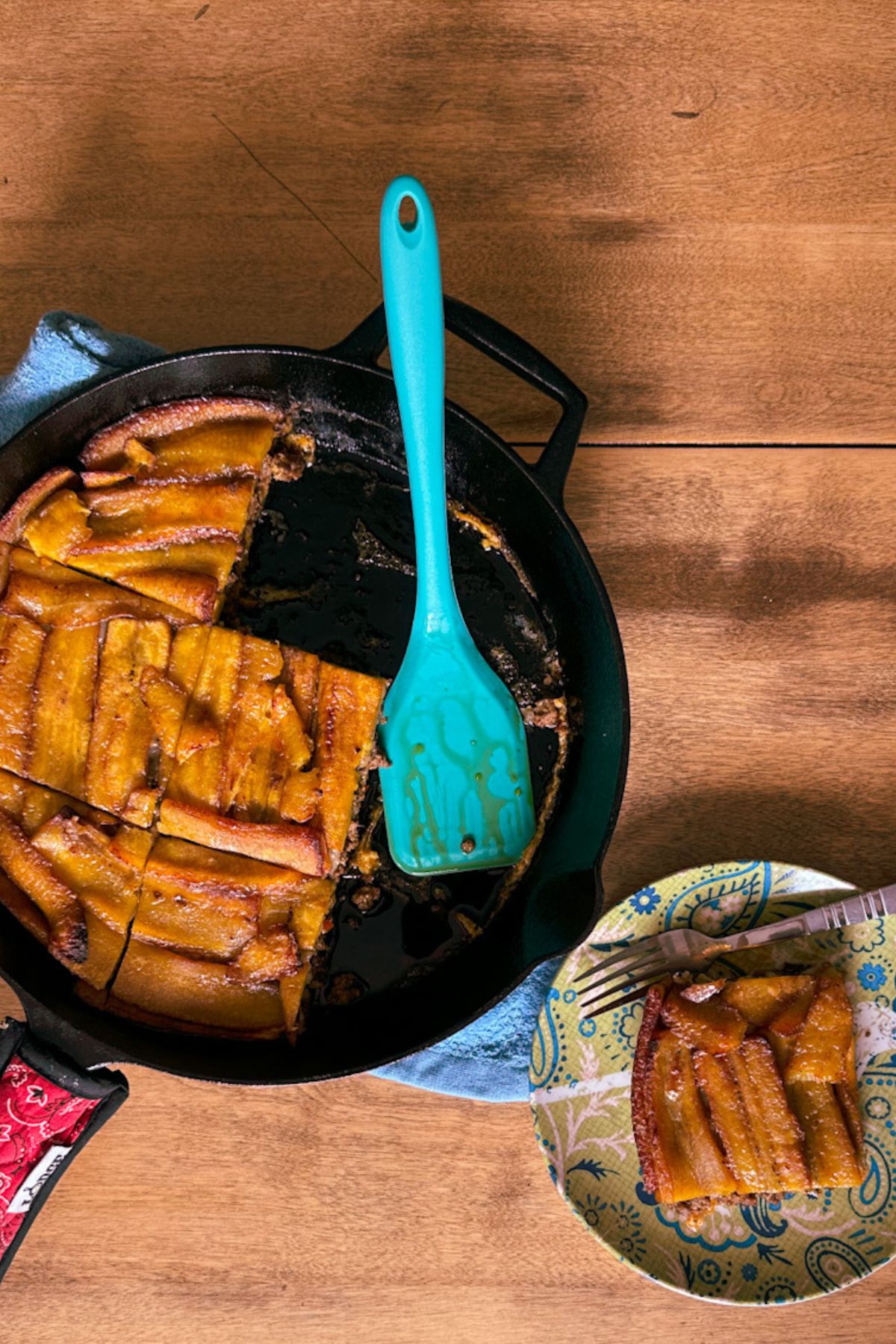
Expert Tips
- Selecting your plantains: Plantains can be found in three stages, green (verdes), mid-ripe (pintos), the stage when the plantains are neither green nor ripe, and ripe (maduros).
- Gauge the time available you have to make the recipe. If you are making the recipe today, try to find ripe plantains. If you are going to make it in 2-3 days, mid-ripe, and if you are going to make it on the weekend and it is the beginning of the week when you are shopping, buy green plantains.
- Check this post if you want to learn more about bananas, plantains, and banana leaves.
- To ripen plantains, place the green plantains in a paper bag. They will ripe well on the counter in a warm kitchen area.
- Gauge the time available you have to make the recipe. If you are making the recipe today, try to find ripe plantains. If you are going to make it in 2-3 days, mid-ripe, and if you are going to make it on the weekend and it is the beginning of the week when you are shopping, buy green plantains.
- Prep for assembly: Pastelón is a relatively easy recipe but requires timing and preparation. Prepare the meat filling or picadillo in advance, maybe the day before, so on the day of the assembly, all you have to do is fry the plantains and put the dish together.
- How hot is hot?: Whether you make all the components of pastelon on the same day or scatter the process over various days, you want to ensure your pastelon is heated to 165℉. 165℉ is the Food Safety measurement for reheating foods and killing harmful bacteria.
- Adding color: When making picadillo, you could use Achiote Oil as n agent of color and flavor. Achiote has a smoky flavor and bright red color and brings an authentic Puerto Rican Flavor when added to any food.
Recipe FAQs
Pastelón means large pie."Pastel" in Spanish means pie. The addition of "ón" refers to the size, in this case, large. If "pastel" had been added "ito" or "illo," then it would refer to a pie smaller than the regular size.
Although traditionally, pies have a flour base crust, for this instance, we substitute the crust with plantains and make the dish in a large skillet or baking dish.
Depending on the area, Pińon might be the name to describe this dish in Puerto Rico. I grew up calling it pastelón. Puerto Rican lasagna is another way of referring to it; however, in my household, we always made it like a pie and not like a lasagna.
In the cookbook Puerto Rican Cookery by Carmen Aboy Valldejuli, she refers to pastelon as boiled, smashed plantains and pińon as sliced fried plantains. So it depends on the region and the person you might be talking to.
Yes, and definitely. The ripe plantains are pliable and moldable, whereas the green plantain is not. Green plantains are great for Tostones (fried, smashed plantain discs great for dipping) and plantain chips. You may substitute the plantain altogether with zucchini or eggplant.
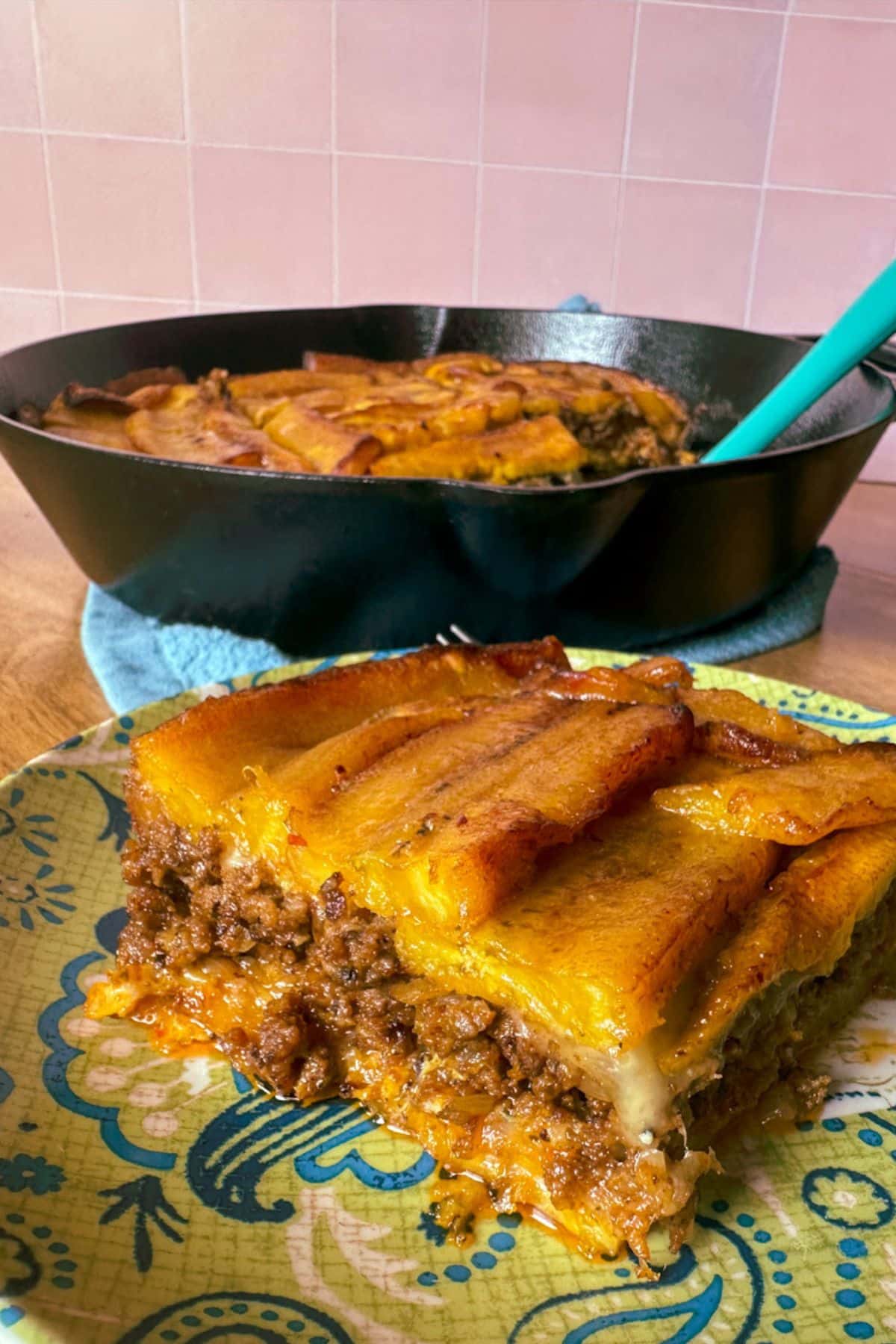
More Puerto Rican Inspirations
I want to know what you think! Did you make this recipe? Please leave a review and a rating below. You can also find me on Instagram! Please sign up for my email list to receive my newest and latest recipes.
📖 Recipe
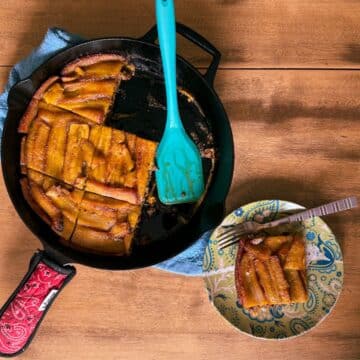
Sweet Plantain Lasagna
Equipment
- 1 cast iron skillet
Ingredients
For Picadillo
- 1 pound ground beef
- ½ Pound fresh chorizo remove casing
- 1 onion diced
- 1 tablespoon Garlic paste
- 1 tablespoon sofrito
- 12 manzanilla olives sliced or chopped
For pastelon
- 6 plantains Peeled, cut in half and slice lengthwise into 4 slices.
- 2 eggs beaten separately
- 2 tablespoon water to be added to the eggs (1/1)
- ½ pound Swiss cheese
- 1 tablespoon butter at room temp for greasing pan
Instructions
- Preheat the oven to 350℉ degrees. Use 5 to 6 plantains for an 18-inch skillet or 3 to 4 for a smaller pan. Precook Puerto Rican Picadillo and pre-fry plantains before assembly.
For PIcadillo (make the night before or the same day and set aside while frying plantains)
- Heat a saute pan, and start browning meats.
- Add onion and cook until onions are translucent.
- Add garlic paste, sofrito, and tomato paste. Let all ingredients incorporate well.
- Season to taste. Cook for another 3 minutes and add olives. Set aside.
Assembling the pastelon
- Grease the pan with butter.
- Cover the bottom of the pan with the plantain slices. Use the larger pieces to cover the biggest areas. Take smaller pieces to break and fill any holes. We want to cover the bottom as much as possible. Once the bottom is covered, line the sides of the casserole. This is not a necessary step, but I like doing it. Again, cover as much as possible. Make an egg wash of one egg and 1 tablespoon of water. Season egg was lightly. Brush the bottom and sides with the egg wash. Pour remaining egg wash on the bottom.
- Place a layer of cheese over the plantains.
- Fill with meat filling.
- Add another layer of cheese. Be as generous as you need. Too little cheese will not help bind the layers together.
- Use remainder plantains to cover the pie. Fill any gaps on the top with smaller pieces.
- Brush top plantain layer with egg wash. Pour any remaining egg wash over top of pastelon. Cook for 15 to 20 minutes or until internal temperature is 165℉. (165℉ is the safest temperature to reheat any food). Since elements of this dish are cooked at diferent times, the safest way to bring this dish back to temp is by cooking it to 165℉.
Notes
- Selecting your plantains: Plantains can be found in three stages, green (verdes), mid-ripe (pintos), the stage when the plantains are neither green nor ripe, and ripe (maduros). Gauge the time available you have to make the recipe. If you are making the recipe today, try to find ripe plantains. If you are going to make it in 2-3 days, mid-ripe, and if you are going to make it on the weekend and it is the beginning of the week when you are shopping, buy green plantains.
- 165℉ is the safest temperature to reheat any food. Since elements of this dish may have been cooked at different times, the safest way to bring this dish back to temp is by cooking it to 165℉.
- Prep for assembly: Pastelón is a relatively easy recipe but requires timing and preparation. Prepare the meat filling or picadillo in advance, maybe the day before, so on the day of the assembly, all you have to do is fry the plantains and put the dish together.
- Adding color: When making picadillo, you could use Achiote Oil as n agent of color and flavor. Achiote has a smoky flavor and bright red color and brings an authentic Puerto Rican Flavor when added to any food.
- To ripen plantains, place the green plantains in a paper bag. They will ripe well on the counter in a warm kitchen area.

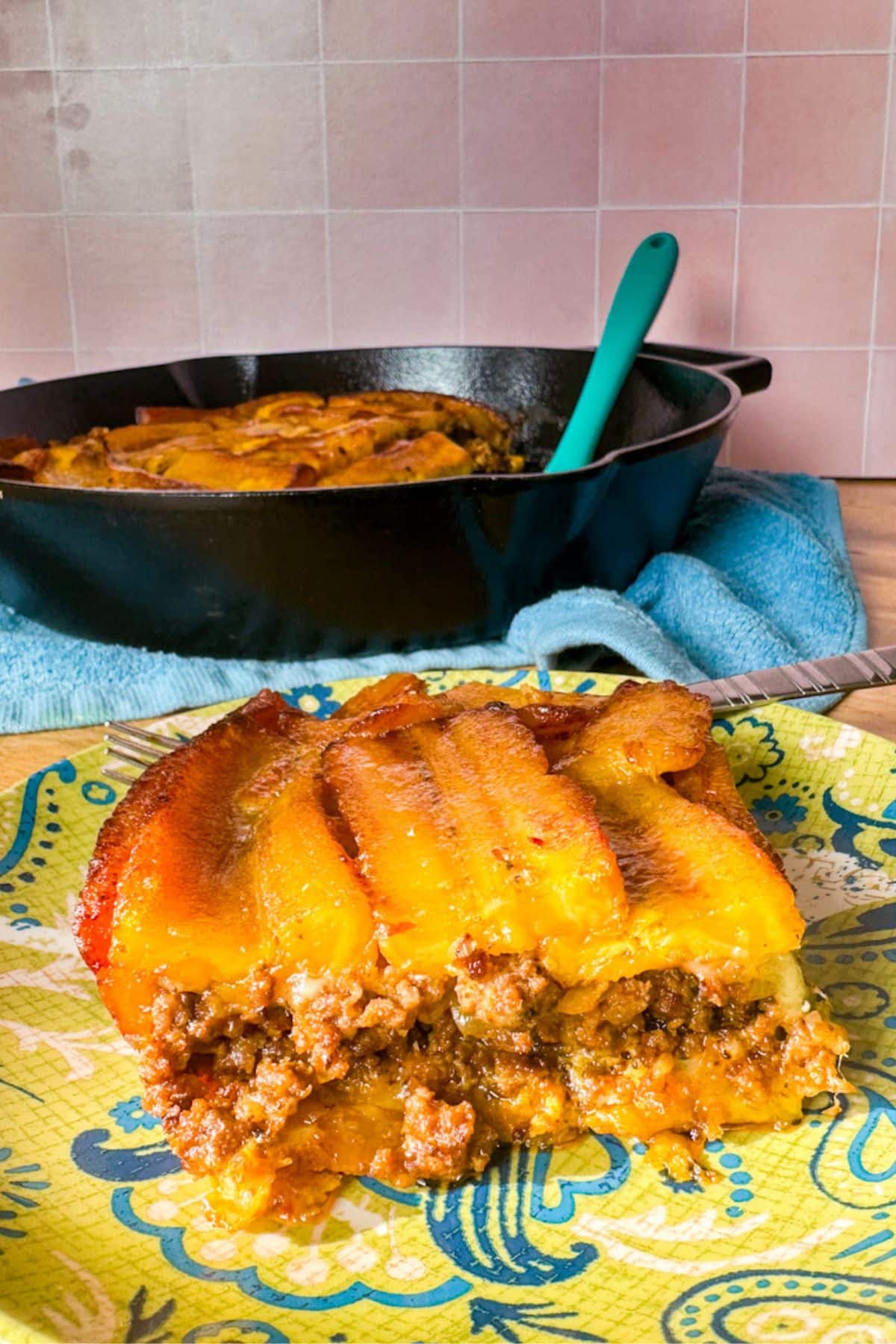
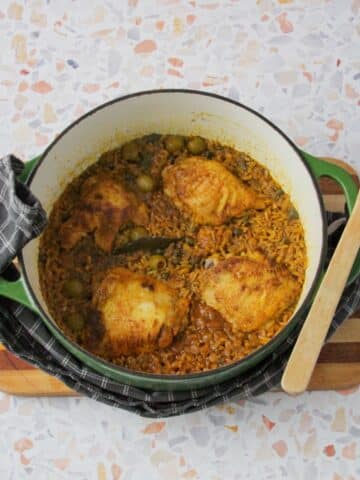
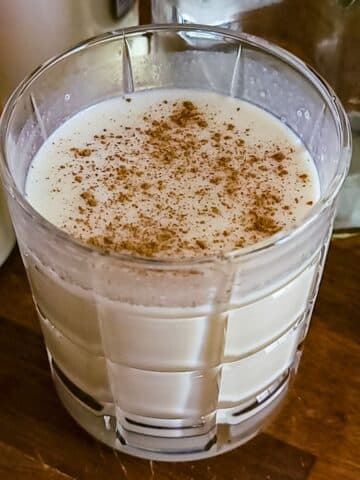

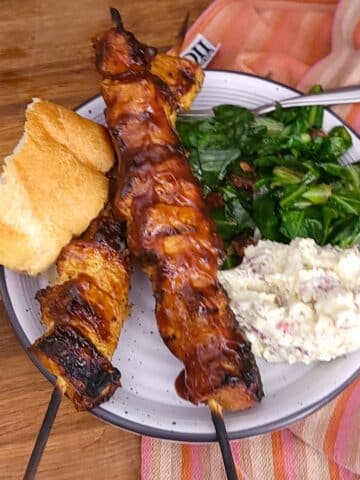
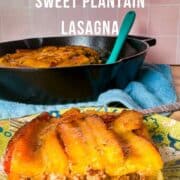
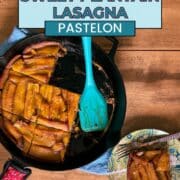
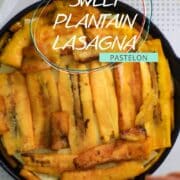
Comments
No Comments